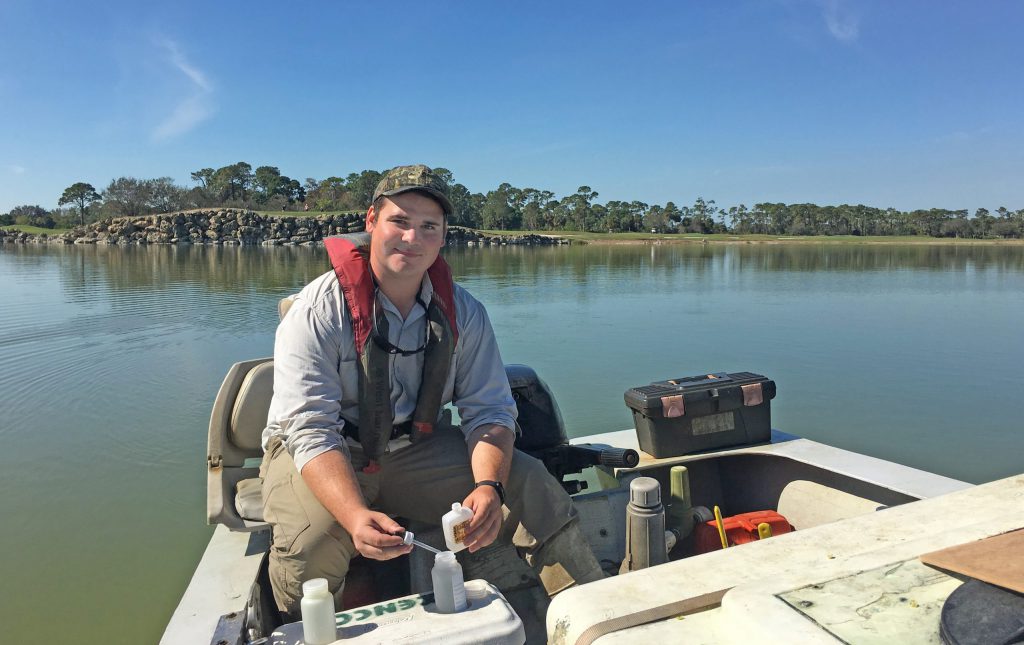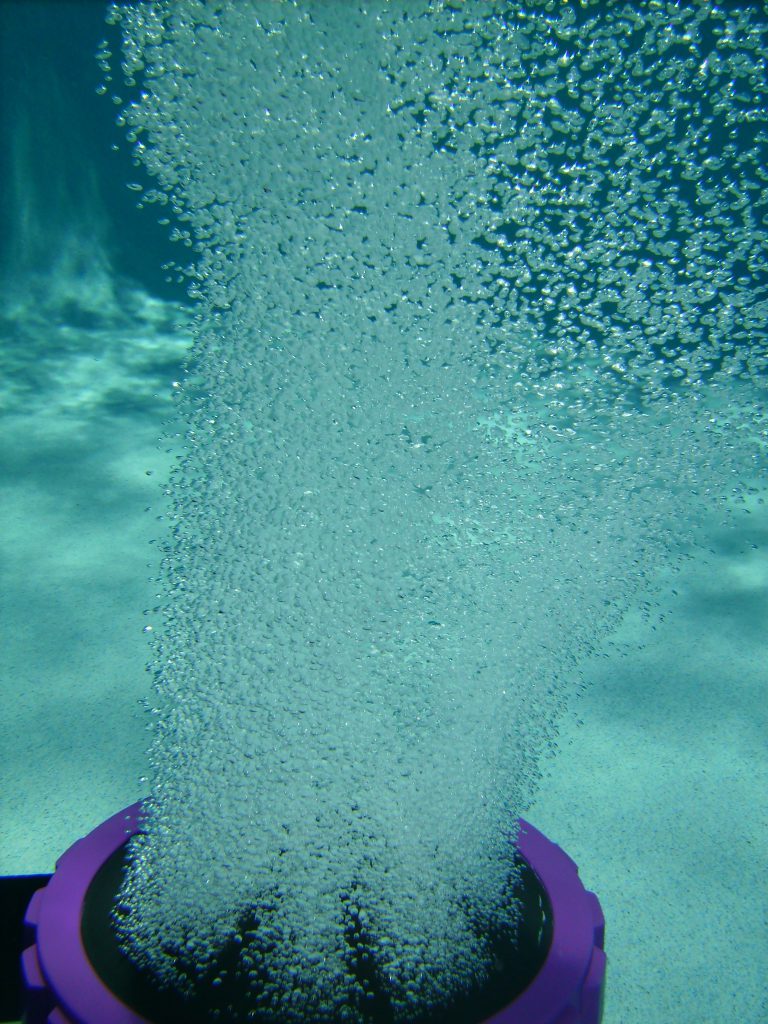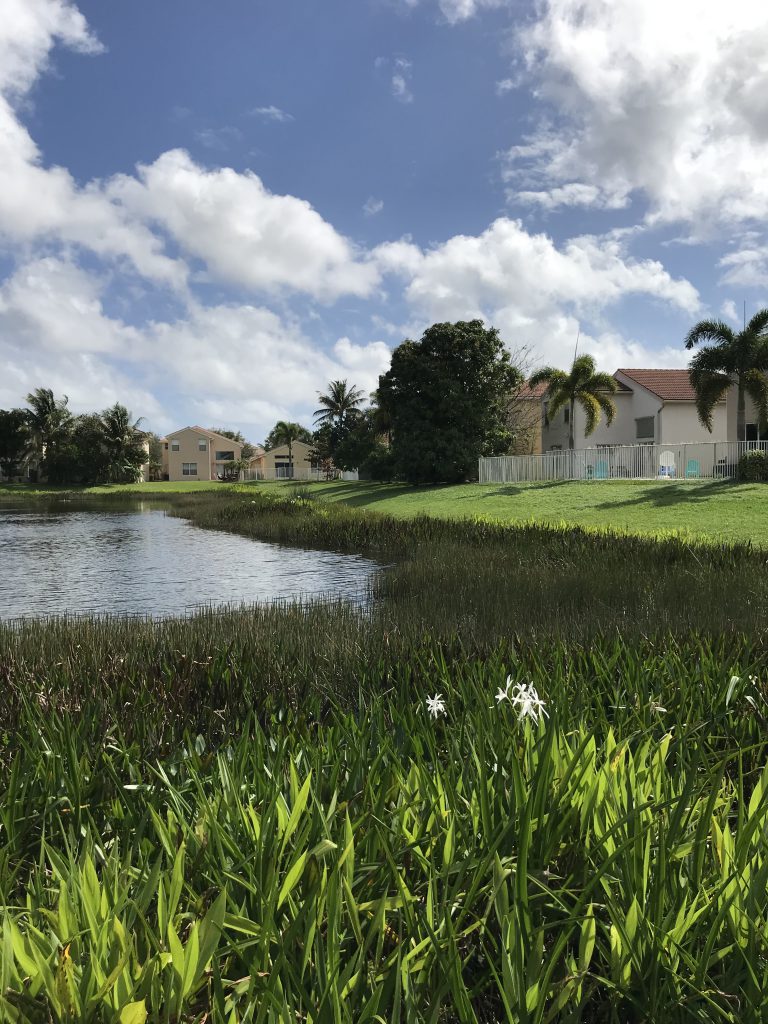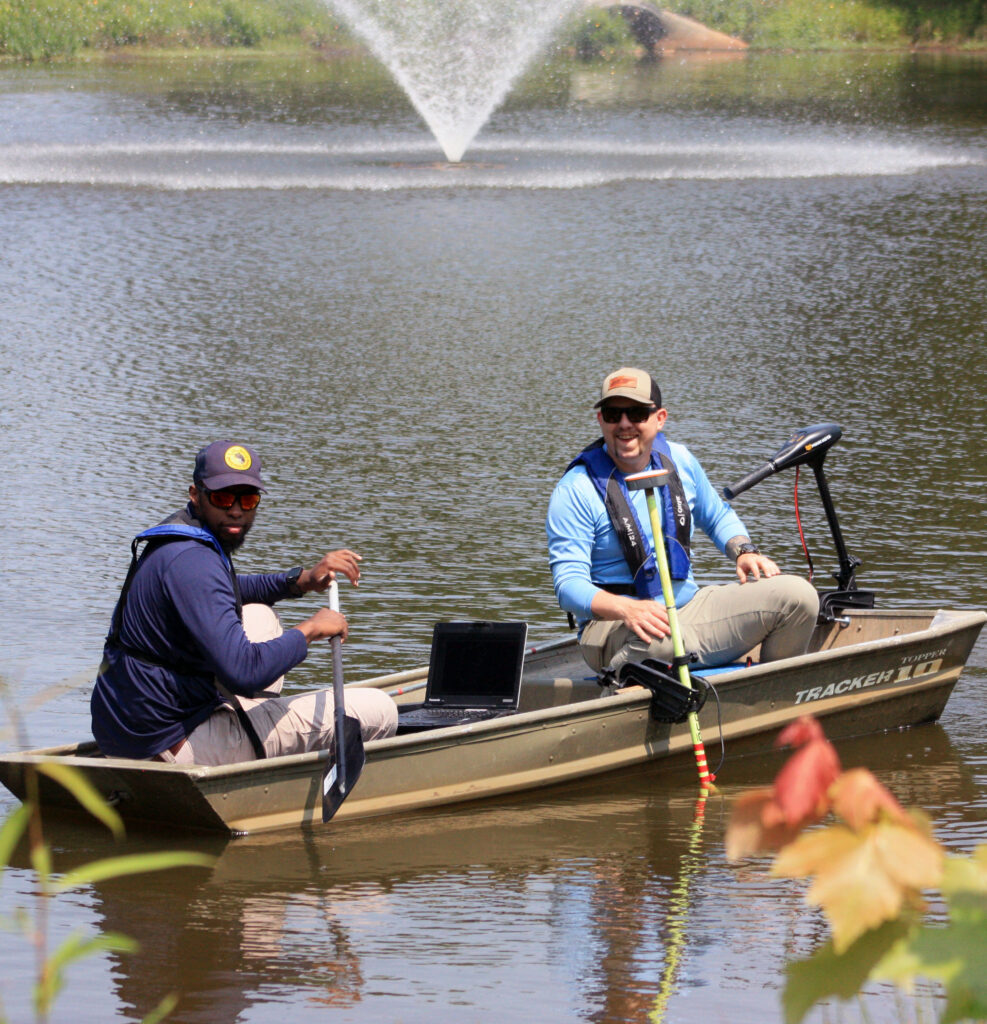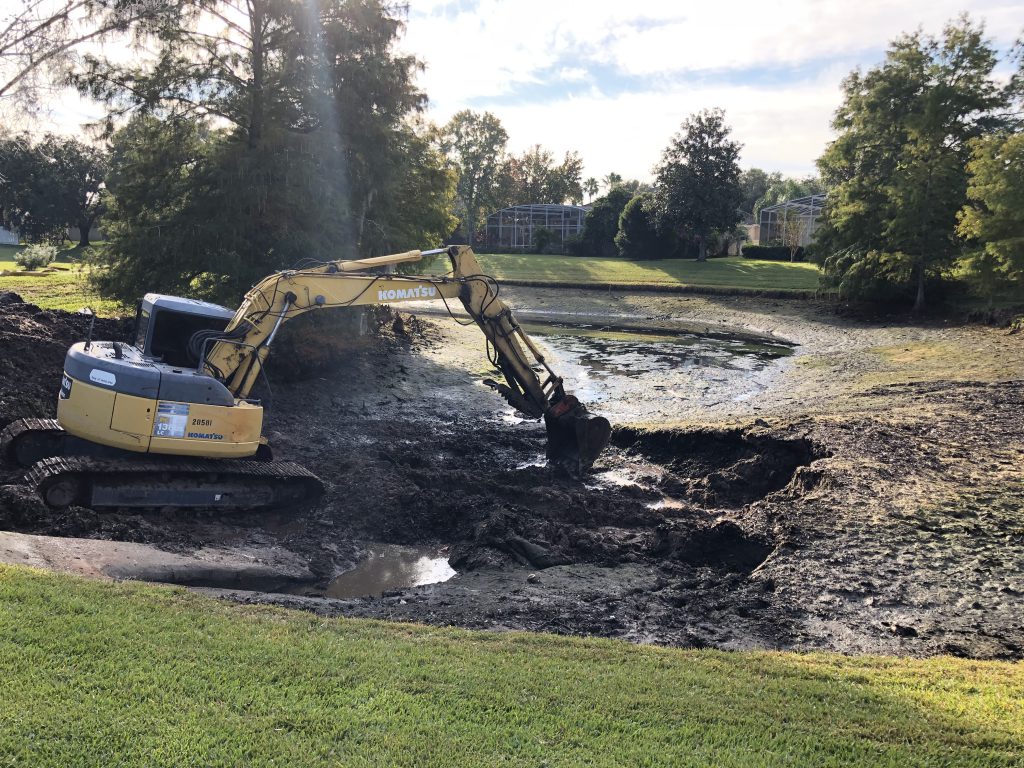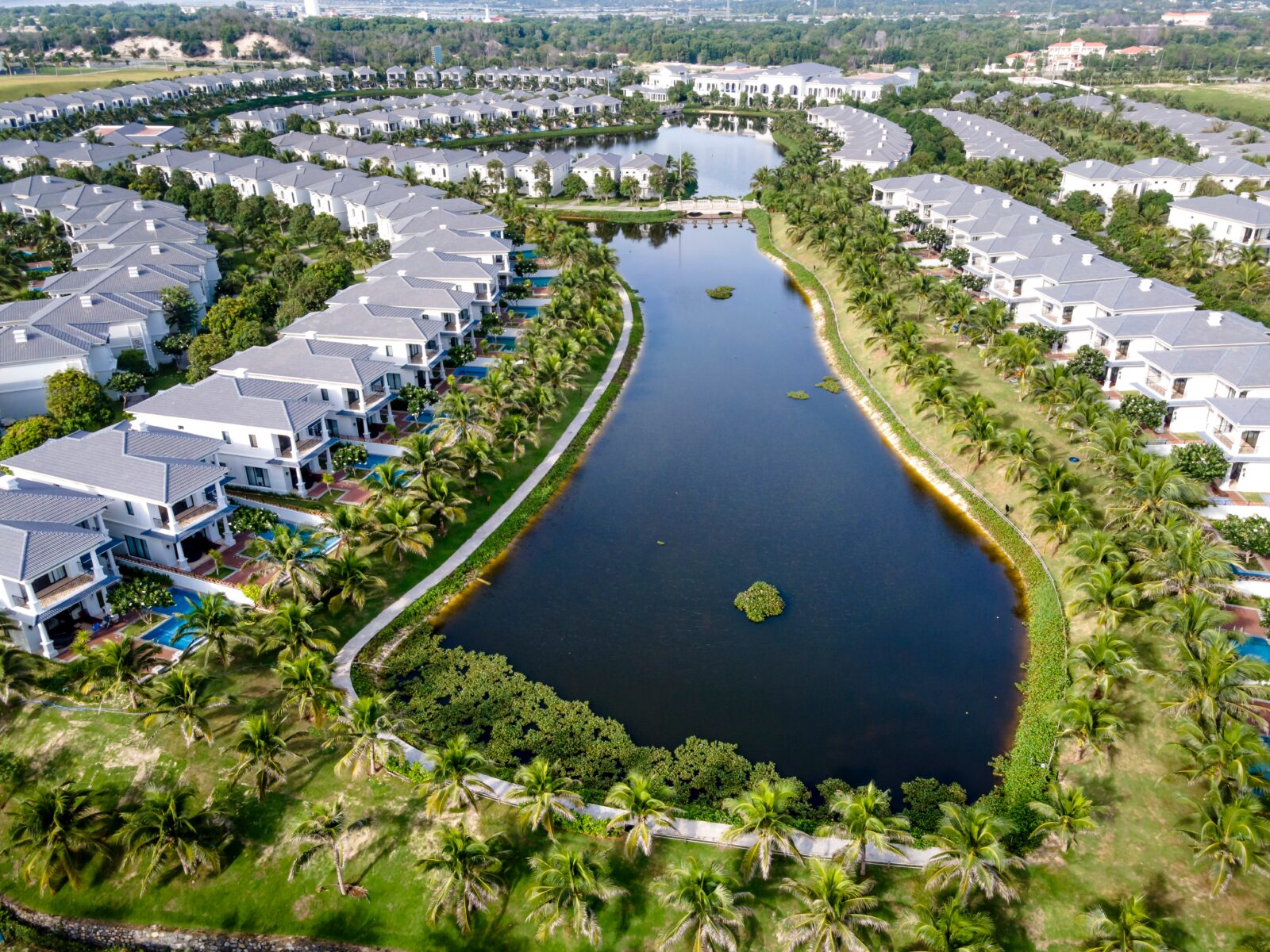
How to Predict the Future of Your Waterbody
Lakes, stormwater ponds, and decorative water features can be found almost everywhere you look, but they are not permanent fixtures in our landscape. Like us, lakes and ponds undergo an “aging” process known as eutrophication that can manifest in many different ways.
Aging ponds are more likely to contain elevated levels of nutrients, which can fuel weed, algae, and toxic cyanobacteria (blue-green algae) growth. Due to build-up that accumulates over many years, they are more prone to bottom muck and flooding. Everyone deserves a healthy, beautiful waterbody, but in order to enjoy it in the present, it’s necessary to plan for its future.
Testing Lake Water Quality to Determine Best Management Solutions
One of the most basic but most valuable tools in freshwater management is water quality testing. Like a blood test, aquatic experts analyze dozens of factors to establish a baseline of health, identify potential areas of concern, and develop a treatment regimen as needed. Parameters like dissolved oxygen (DO), turbidity, total phosphorus, and temperature can reveal a lot about what’s going on beneath the surface. And by tracking these parameters over time, lake management professionals can identify trends and predict what may be in store for your waterbody in the coming months and years.
Improving Water Quality Deficiencies with Proactive Solutions
For example, falling DO levels can indicate that the environment is becoming less hospitable to aquatic life. This is particularly common as temperatures rise in the summer as the solubility of oxygen decreases. Fish, beneficial microorganisms, and native aquatic plants require oxygen to survive. Without intervention, fish kills and die-offs may be in your waterbody’s near future. But when caught early, floating fountains, surface aerators, submersed aerators, and oxygen saturation technologies like nanobubbles can be introduced to increase DO and circulate it throughout the water column.
Reduce Excess Phosphorus for Improved Water Quality
Rising phosphorus levels may suggest that the rate of eutrophication is accelerating. Getting to the root cause of this increase is important to halt and even reverse the degradation of a lake or pond. For example, nutrients may be entering the waterbody via stormwater runoff. During storms, rainwater flows across impervious surfaces, picking up nutrient-rich sediment, trash, animal waste, and yard debris before it flows into stormwater ponds.
Stakeholders can take action by establishing a beneficial vegetative buffer around the perimeter of the waterbody to slow the velocity of the runoff and filter out trash and pollutants. Products like Phoslock, alum (aluminum sulfate), and EutroSORB can also be applied as additional tools to “lock up” or physically remove excess nutrients before they can fuel incoming weed and algae growth.
Identify Potential Issues Under with Water with Lake Mapping
In addition to nutrient remediation, professionals may recommend completing a bathymetric mapping study to evaluate depth levels and monitor for underwater signs of aging. During a bathymetric study, hundreds of data points are collected to map the bottom of the waterbody, revealing the unique depths and contours. When conducted on a recurring basis, bathymetry can reveal the areas at most risk of sedimentation and help estimate future sediment removal needs. With an accurate timeline, stakeholders can properly budget and prepare.
Maintain Depth By Removing Bottom Muck & Sediment
Shoreline erosion may be another sign that your waterbody is aging. As sediment deteriorates into the water, it contributes to the formation of a layer of nutrient-rich muck on the bottom that reduces the waterbody’s depth and capacity to hold water. Without intervention, costly dredging will be required in the future to physically remove accumulated sediment and restore the waterbody to its original form.
But when caught early, aquatic experts may be able to target build-up in smaller zones with a mechanical hydro-rake, or apply beneficial bacteria to aid in the natural “digestion” of muck – much like a probiotic. To prevent erosion from reoccurring, these efforts should be paired with shoreline restoration techniques for years of lasting stability and aesthetic appeal.
Prolong Your Lake's Lifespan with Proactive Management
Ultimately, dredging is in every waterbody’s future if not properly managed. But every waterbody is unique and requires different maintenance techniques to not only prolong the need for dredging, but to also reach its full potential as a recreational lake, stormwater pond, or aesthetic focal point. Through an Annual Management Program, aquatic experts keep a watchful eye out for signs of functional and water quality problems, and get ahead of them through preventative solutions – so stakeholders can get a lifetime of use and enjoyment from their water resources.
Discover Best Management Practices
Watch our videos below.
SOLitude Lake Management is a nationwide environmental firm committed to providing sustainable solutions that improve water quality, enhance beauty and preserve natural resources.
SOLitude’s team of aquatic scientists specializes in the development and execution of customized lake, stormwater pond, wetland and fisheries management programs. Services include water quality testing and restoration, algae and aquatic weed control, installation and maintenance of fountains and aeration systems, shoreline erosion control, muck and sediment removal and invasive species management. SOLitude partners with homeowners associations, golf courses, private landowners, businesses and municipalities. SOLitude Lake Management is part of Rentokil, a leading business services company, operating across the United States, Canada and Puerto Rico.
For more information, visit SOLitude Lake Management at solitudelakemanagement.com, and connect on Facebook, LinkedIn and Twitter.








